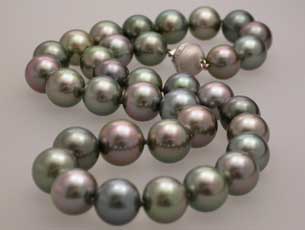
A Quick Guide to Pearl Types
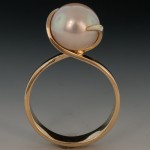 Akoya – Lustrously Delicate. Cultured Pearls farmed in Japanese and Chinese ocean water, created by a type of oyster called Pinctada fucata martensii; The “Akoya Pearl” Oyster. Usually found in sizes of 2 – 8mm with 8 – 10mm considered very large for Akoya pearls. Known for their white to cream coloration, while Japanese value a very slight pink tone. They are valued for their mirror-like luster and depth (orient).
Akoya – Lustrously Delicate. Cultured Pearls farmed in Japanese and Chinese ocean water, created by a type of oyster called Pinctada fucata martensii; The “Akoya Pearl” Oyster. Usually found in sizes of 2 – 8mm with 8 – 10mm considered very large for Akoya pearls. Known for their white to cream coloration, while Japanese value a very slight pink tone. They are valued for their mirror-like luster and depth (orient).
Tahitian – Black and Bold. Cultured pearls farmed in Polynesian ocean water, created by the Pinctada margaritifera oyster or the “black-lip oyster”. These oysters are larger and can produce pearls as large as 16mm though 8 – 10mm is more common. Color ranges from light gray to very dark gray, and can exhibit greens, blues and purples, with the most valued examples showing an “oil slick” type spectrum of colors. These pearls are often called “peacock” color and are among the most prized.
South Seas – The Big Kahuna. Cultured Pearls farmed mostly in Australian ocean waters, but some in other south seas locations such as he Philippines and Fiji. Created by the Pinctada maxima; the “gold-lip oyster” which produce the largest pearls. Typical size is 10 – 12mm but some can be over 20mm. They are often white, but also often come in a golden-yellow color called “golden pearls.” Rarer are the pinks. Australian Farms tend to produce White Pearls, while Golden Pearls most often come from more easterly locations such as the Philippines.
 Freshwater Pearls – Affordable Elegance. Cultured mostly in Chinese freshwater rivers and lakes. Some are cultured in Japan and other locations. Generally created by freshwater mussels. Freshwater pearls were cultured in Japan starting in the early 1900’s, but production was limited peaking at 6 tons in 1971, before pollution wiped out most Japanese production. Large-scale freshwater pearl farming started in the 1970’s and 80’s with current production levels over 1500 tons annually. Freshwater pearl culturing is advancing rapidly. Pearls produced early on were mostly rice-grain shaped. Later a “potato” oval shape was produced, and more recently near round and round pearls are being produced. Freshwater pearls have been increasing in size as cultivation techniques improve. Today, they rival Tahitian and South-Sea pearls in size and examples of 12mm and larger are beginning to appear. Freshwater pearls, while beautiful. typically do not achieve quite the same luster or roundness as saltwater pearls, and prices are thus more affordable.
Freshwater Pearls – Affordable Elegance. Cultured mostly in Chinese freshwater rivers and lakes. Some are cultured in Japan and other locations. Generally created by freshwater mussels. Freshwater pearls were cultured in Japan starting in the early 1900’s, but production was limited peaking at 6 tons in 1971, before pollution wiped out most Japanese production. Large-scale freshwater pearl farming started in the 1970’s and 80’s with current production levels over 1500 tons annually. Freshwater pearl culturing is advancing rapidly. Pearls produced early on were mostly rice-grain shaped. Later a “potato” oval shape was produced, and more recently near round and round pearls are being produced. Freshwater pearls have been increasing in size as cultivation techniques improve. Today, they rival Tahitian and South-Sea pearls in size and examples of 12mm and larger are beginning to appear. Freshwater pearls, while beautiful. typically do not achieve quite the same luster or roundness as saltwater pearls, and prices are thus more affordable.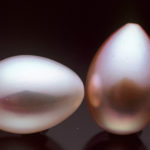
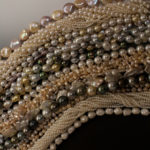 Keshi Pearls are small non-nucleated pearls typically formed as by-products of pearl cultivation. They are always baroque or unusual shaped and found in wide range of pastel colors.
Keshi Pearls are small non-nucleated pearls typically formed as by-products of pearl cultivation. They are always baroque or unusual shaped and found in wide range of pastel colors.
